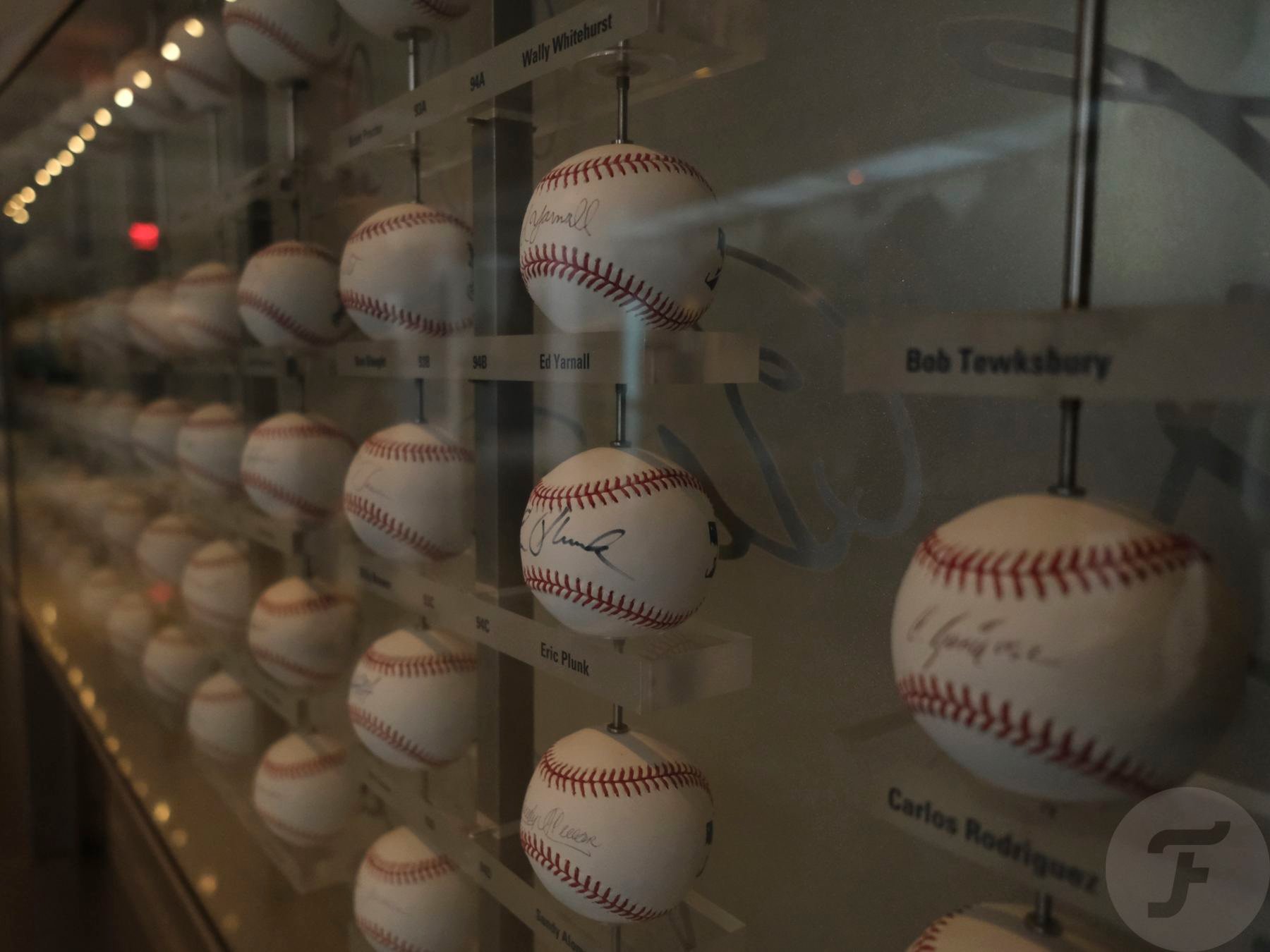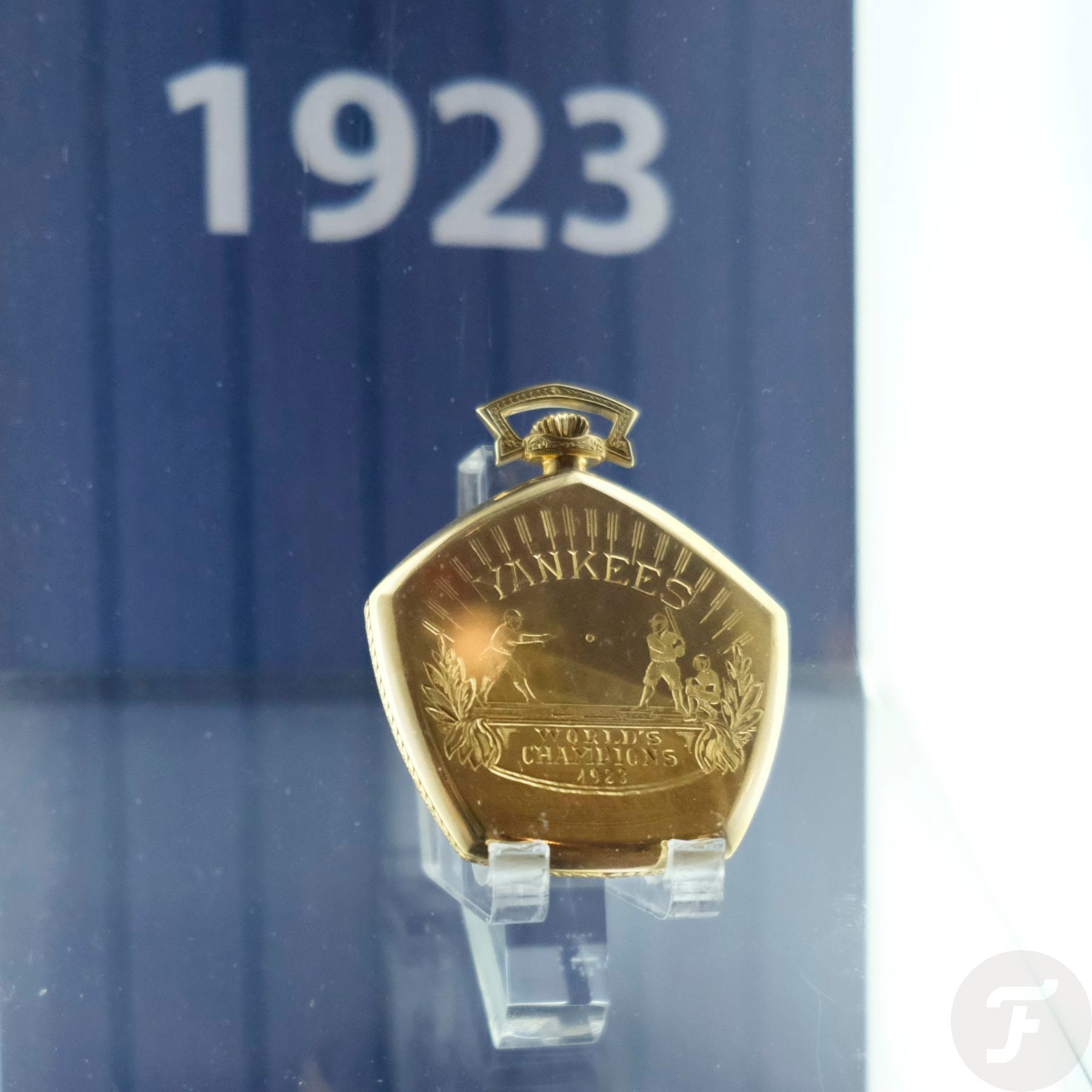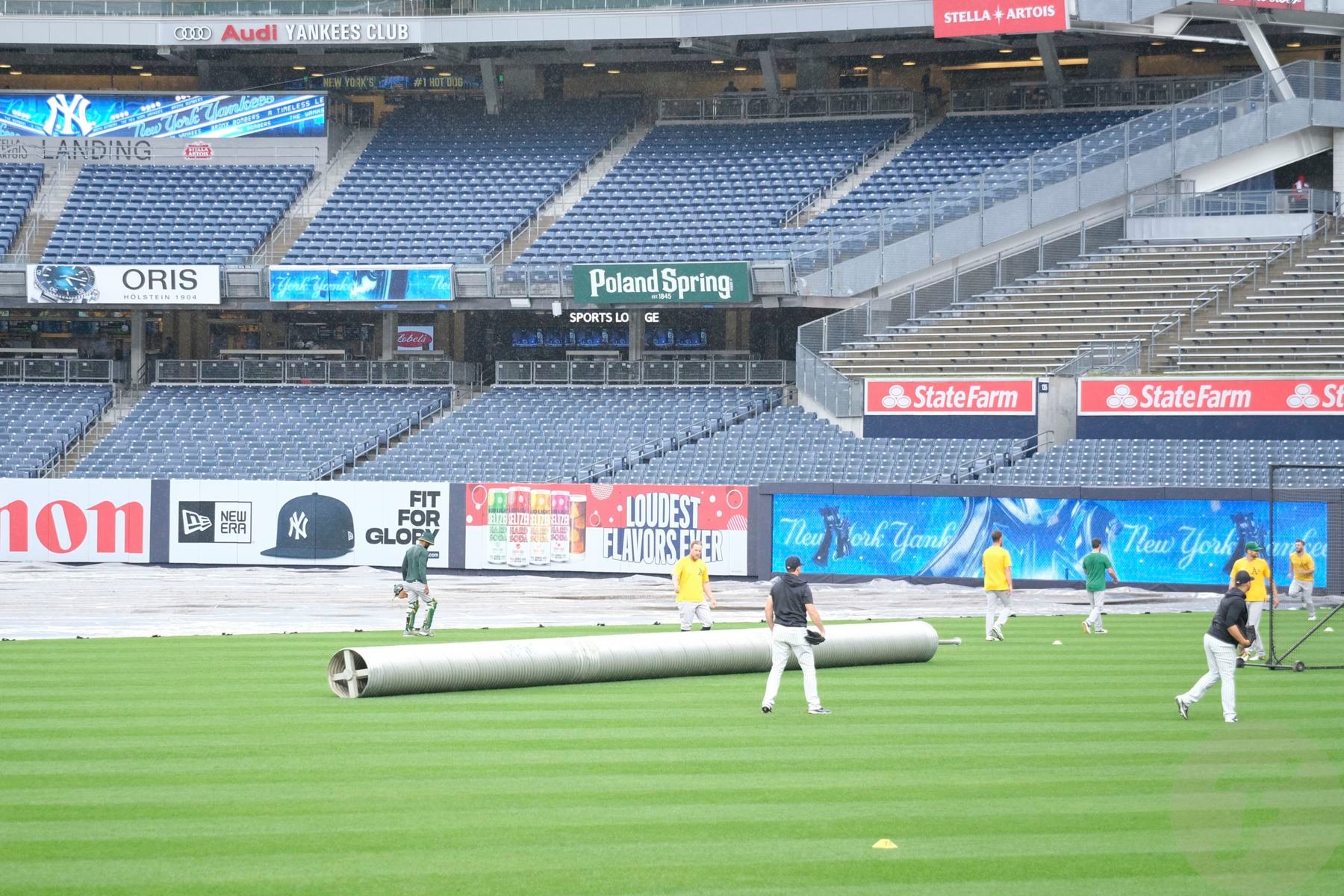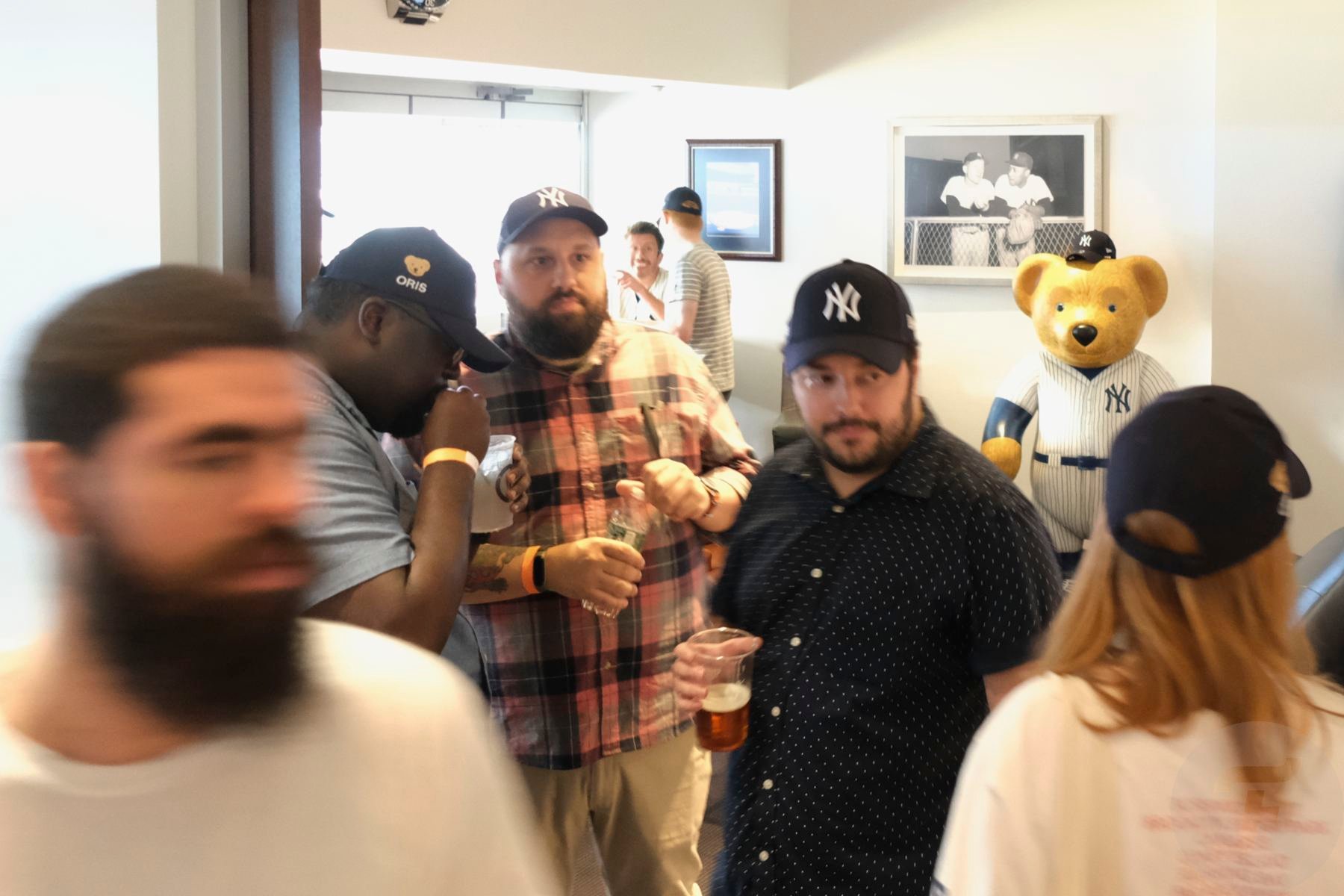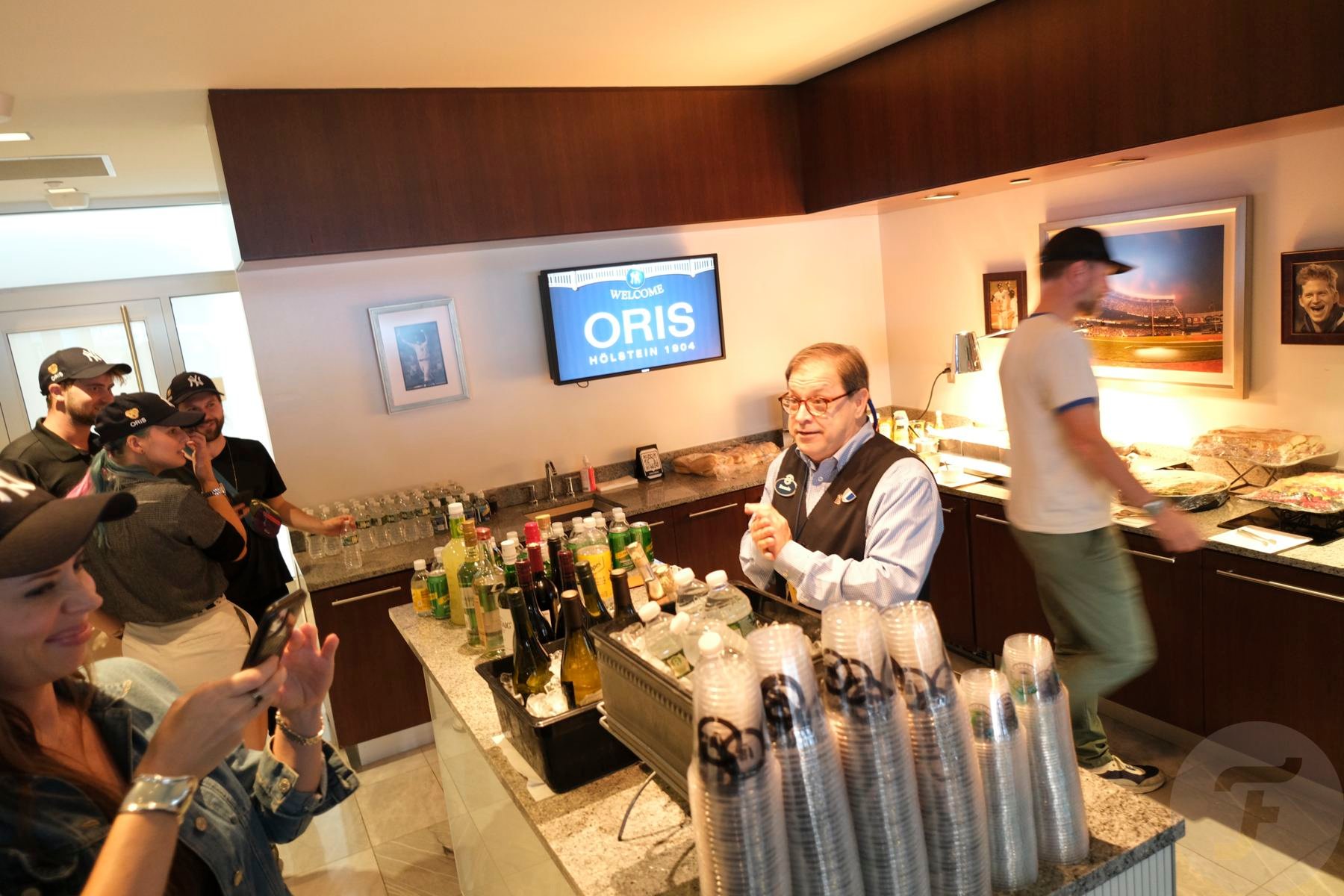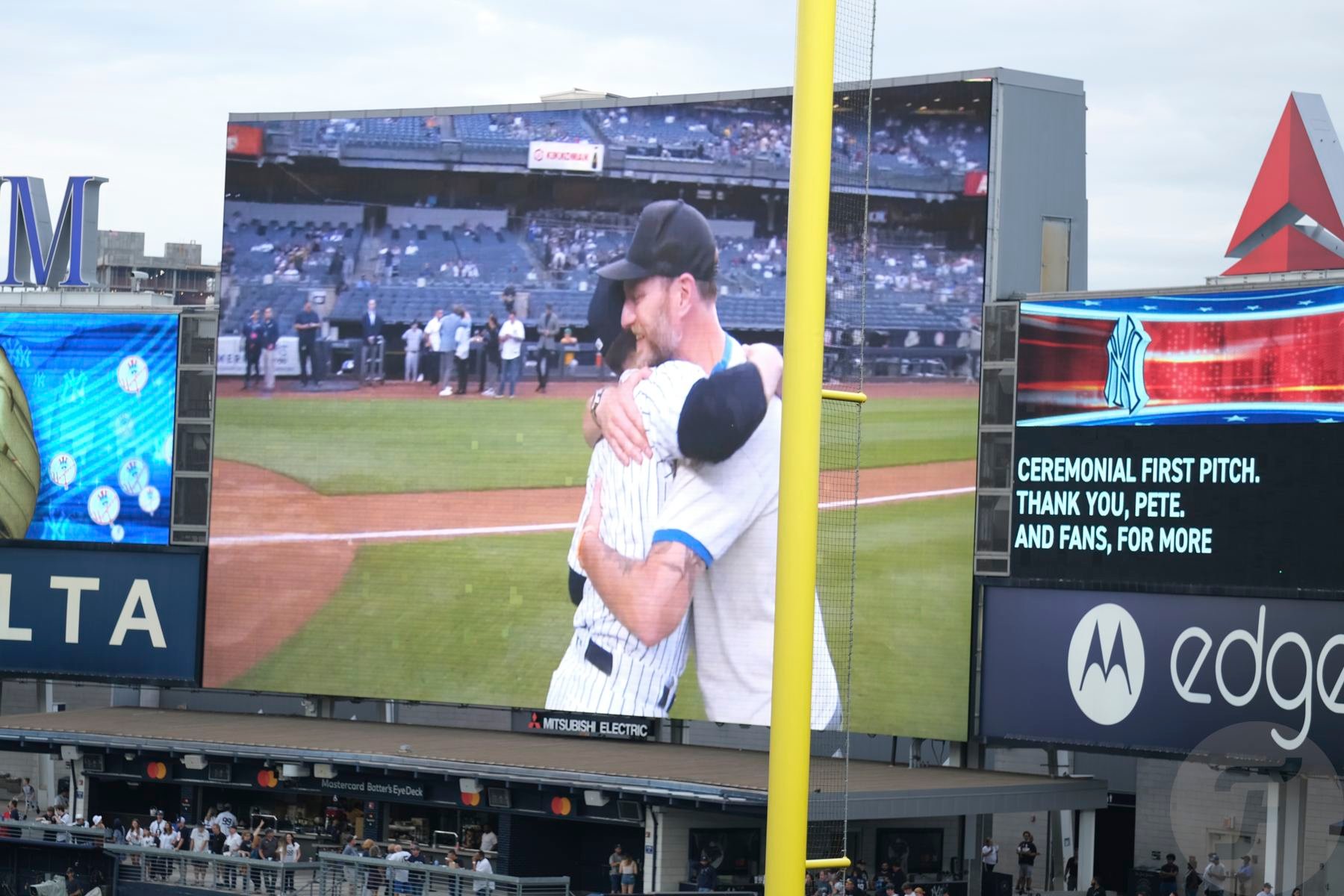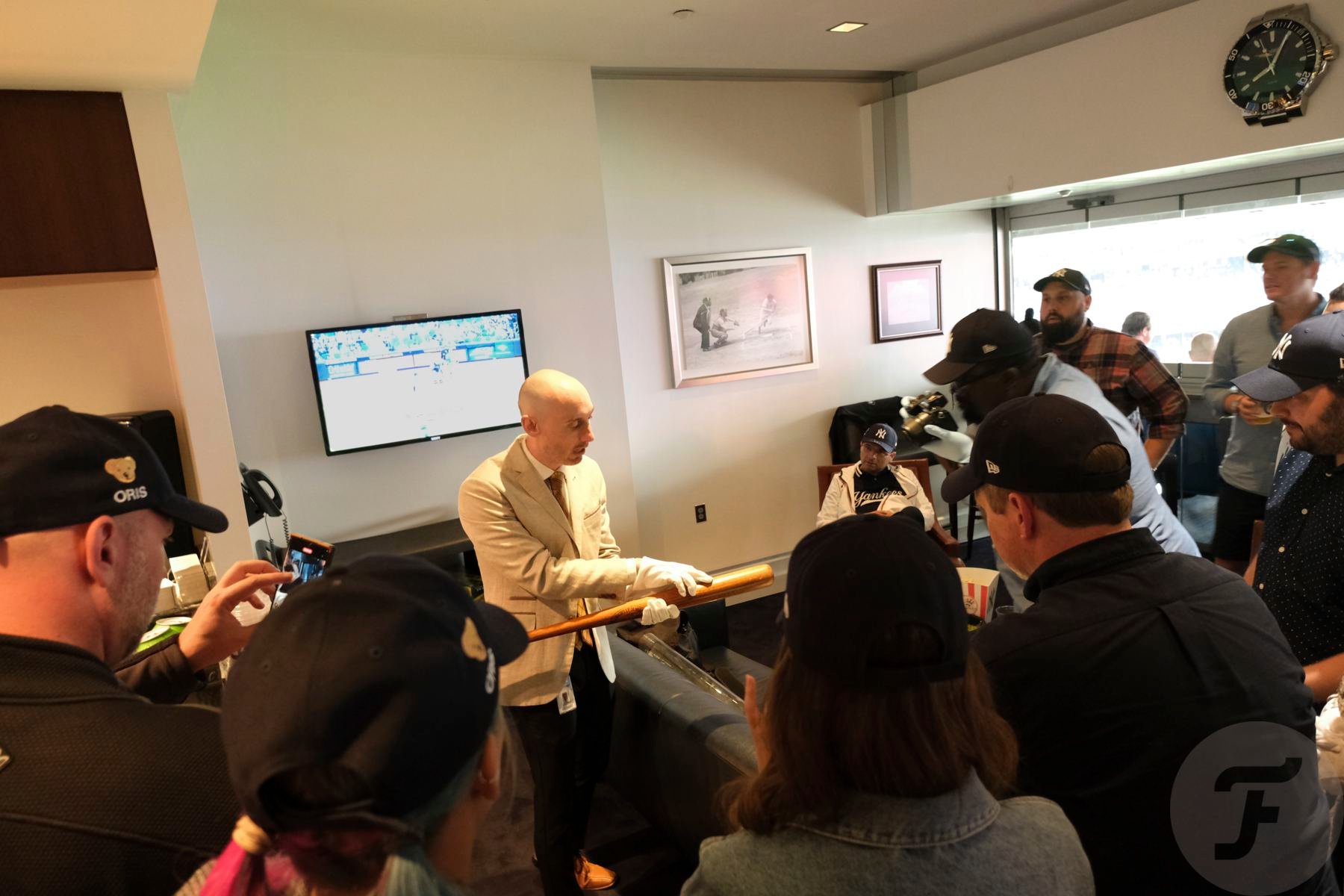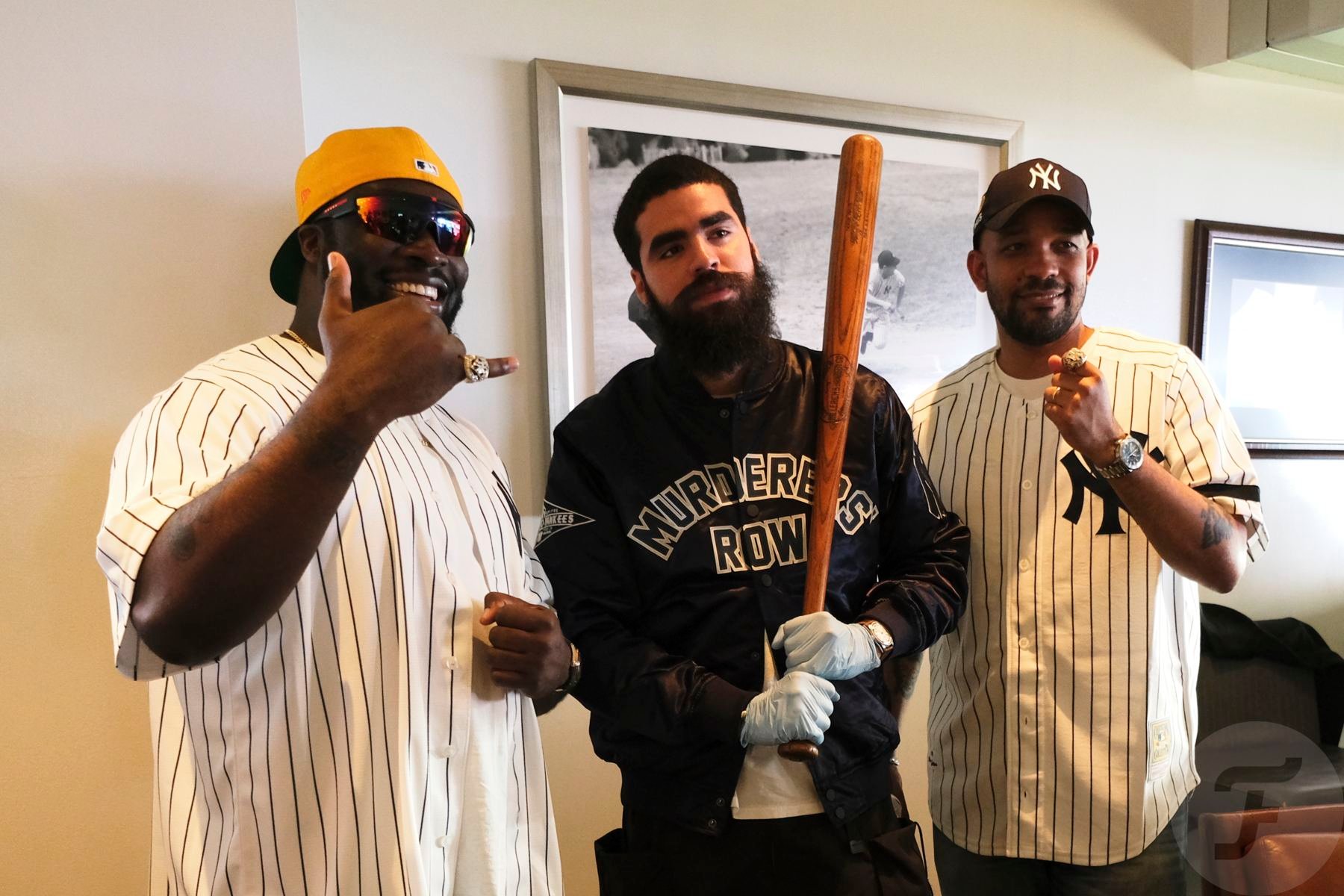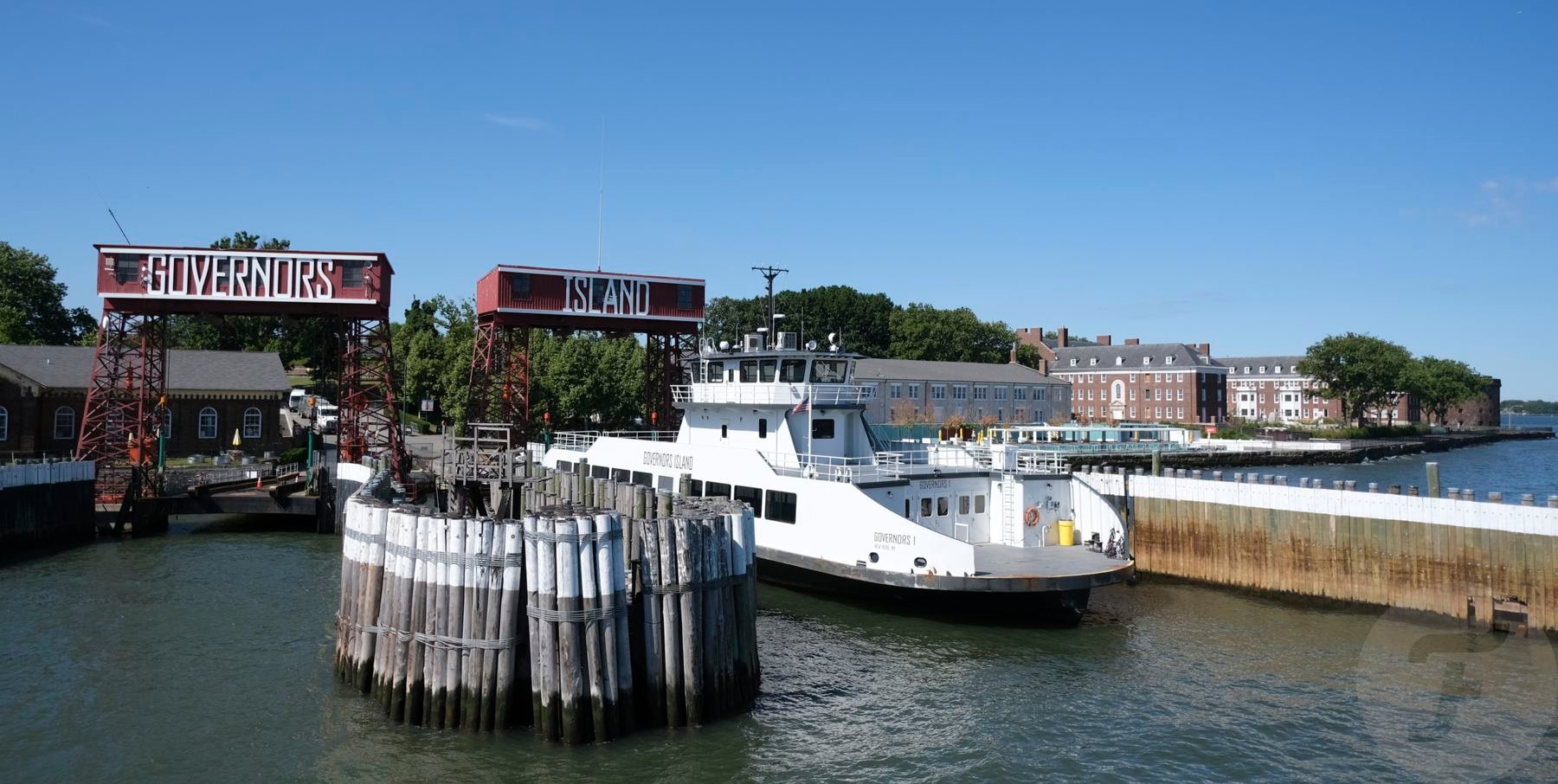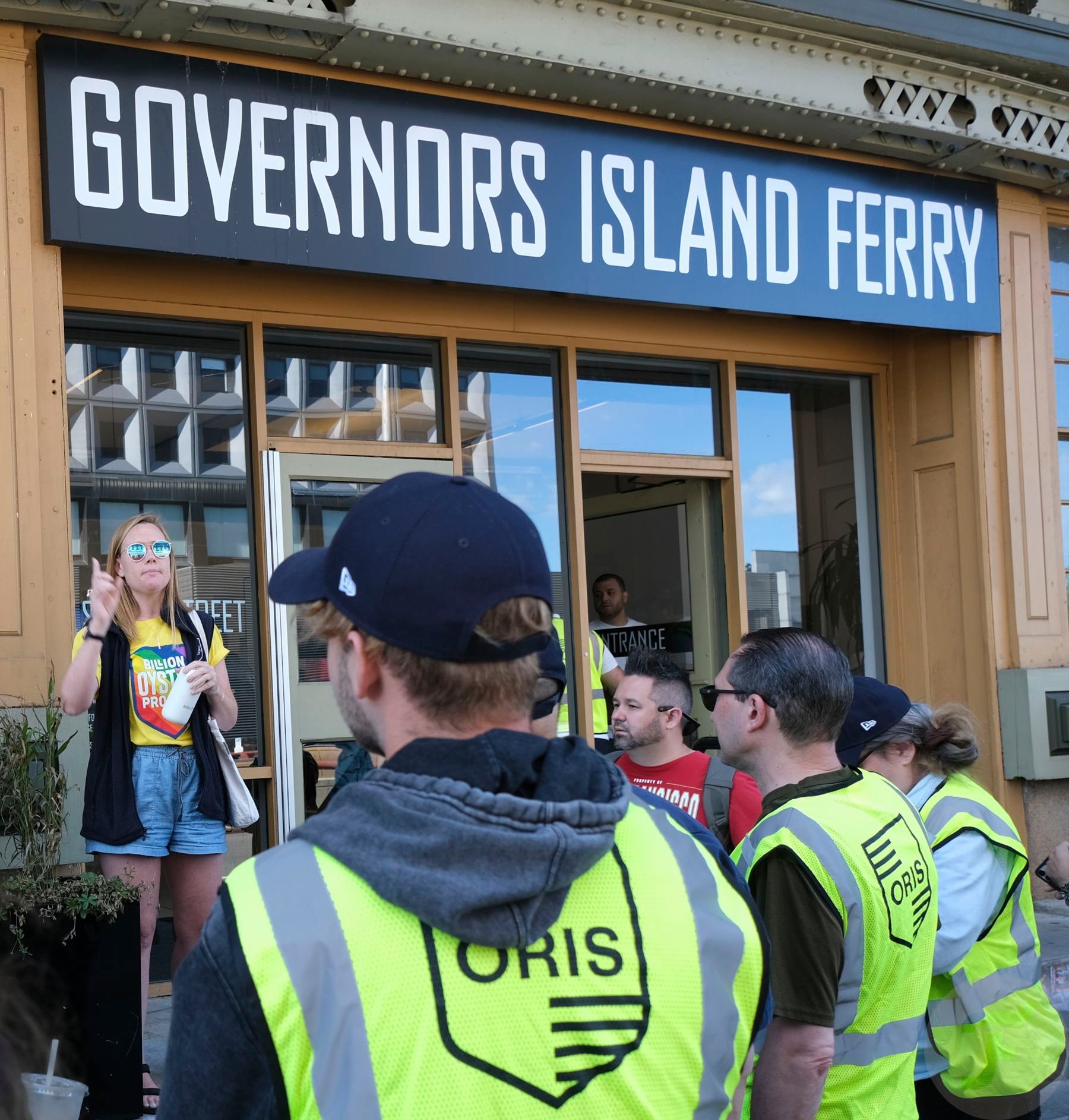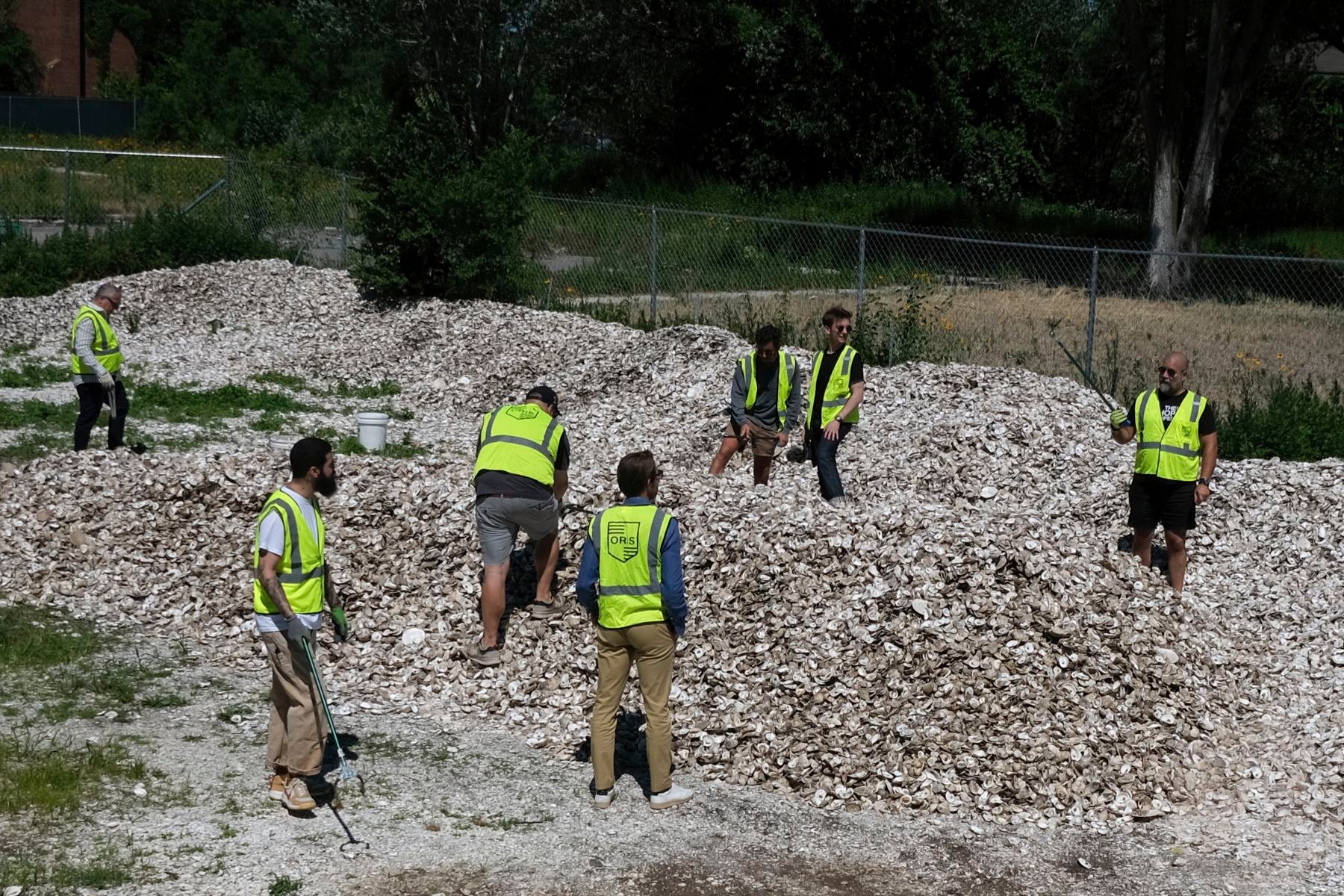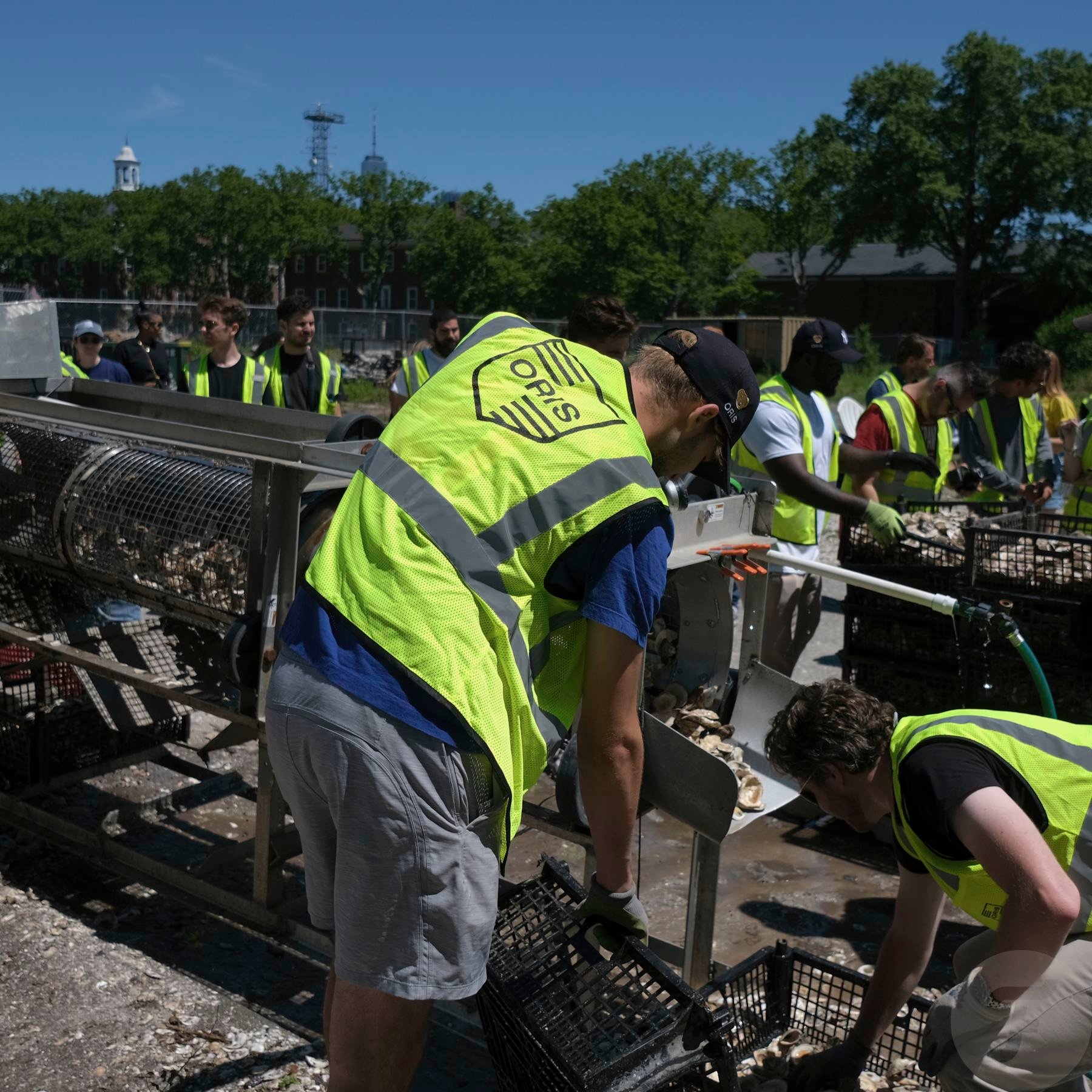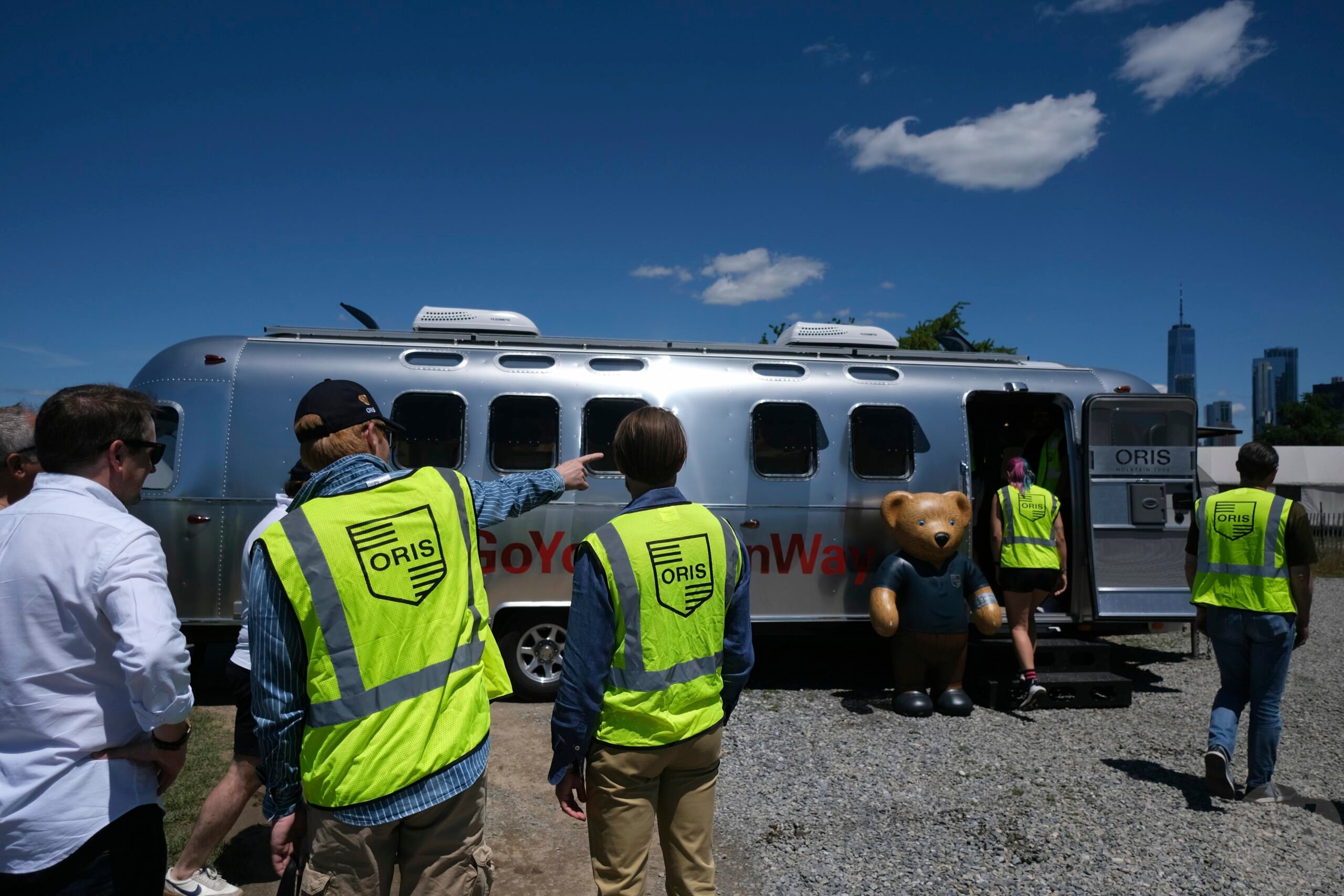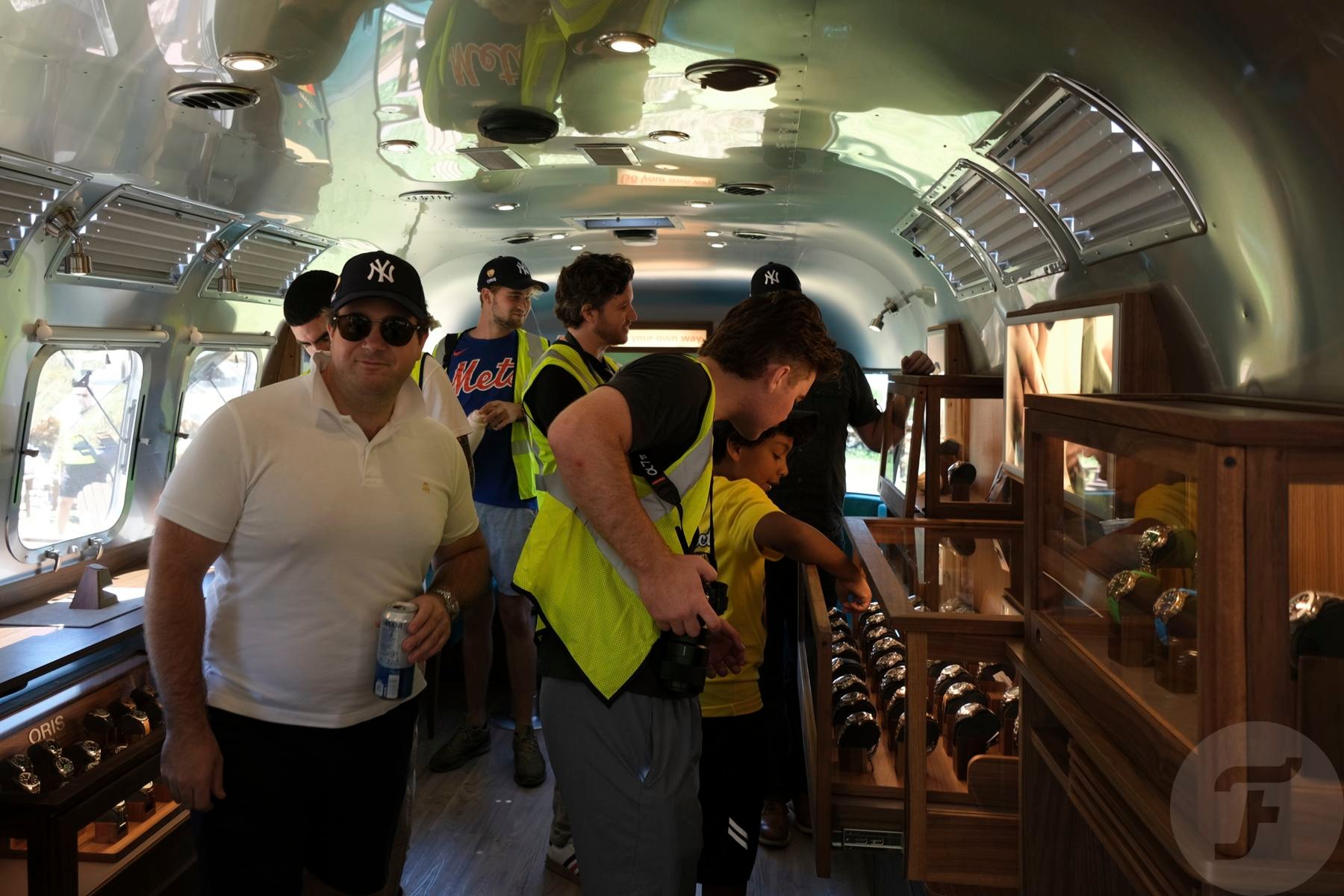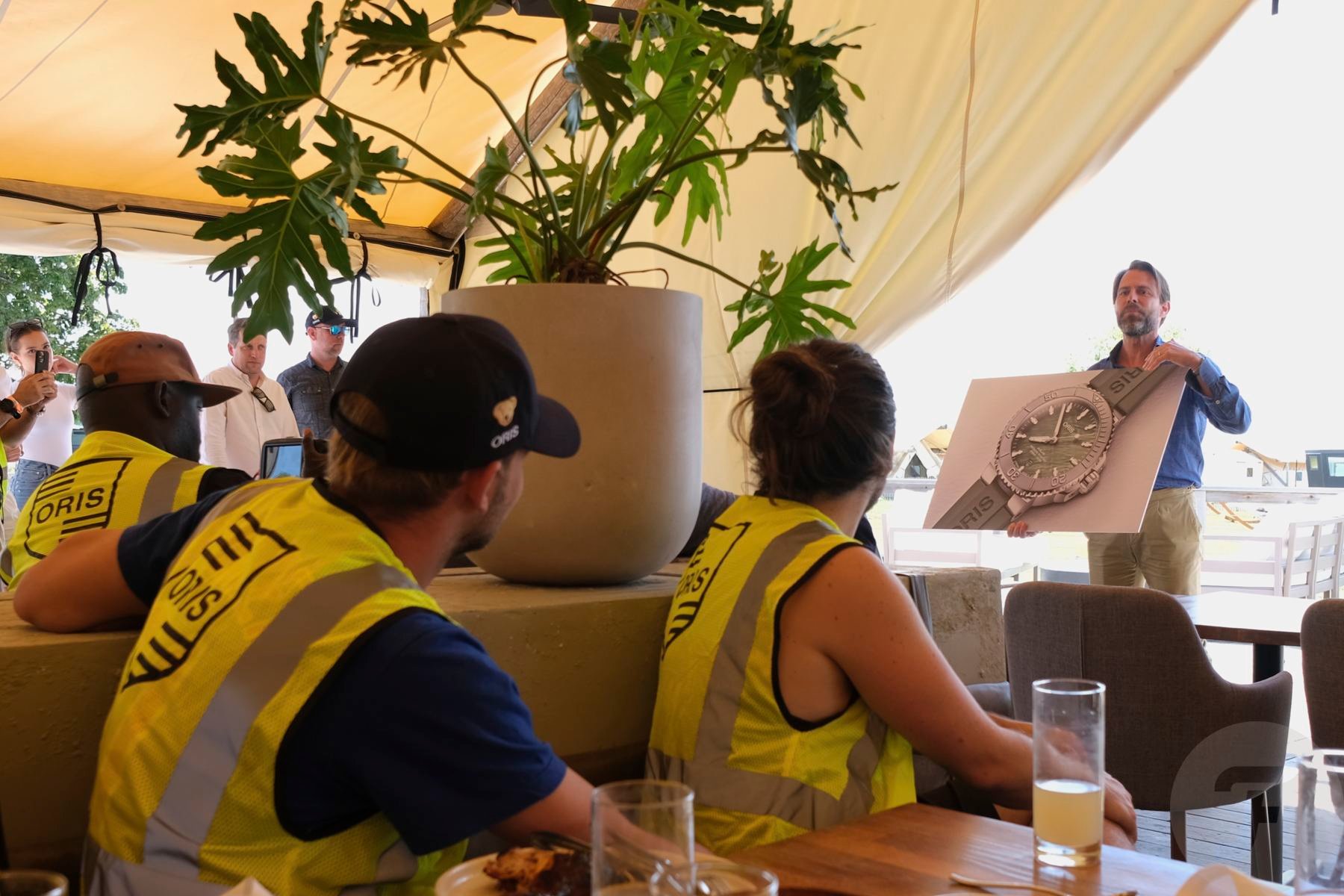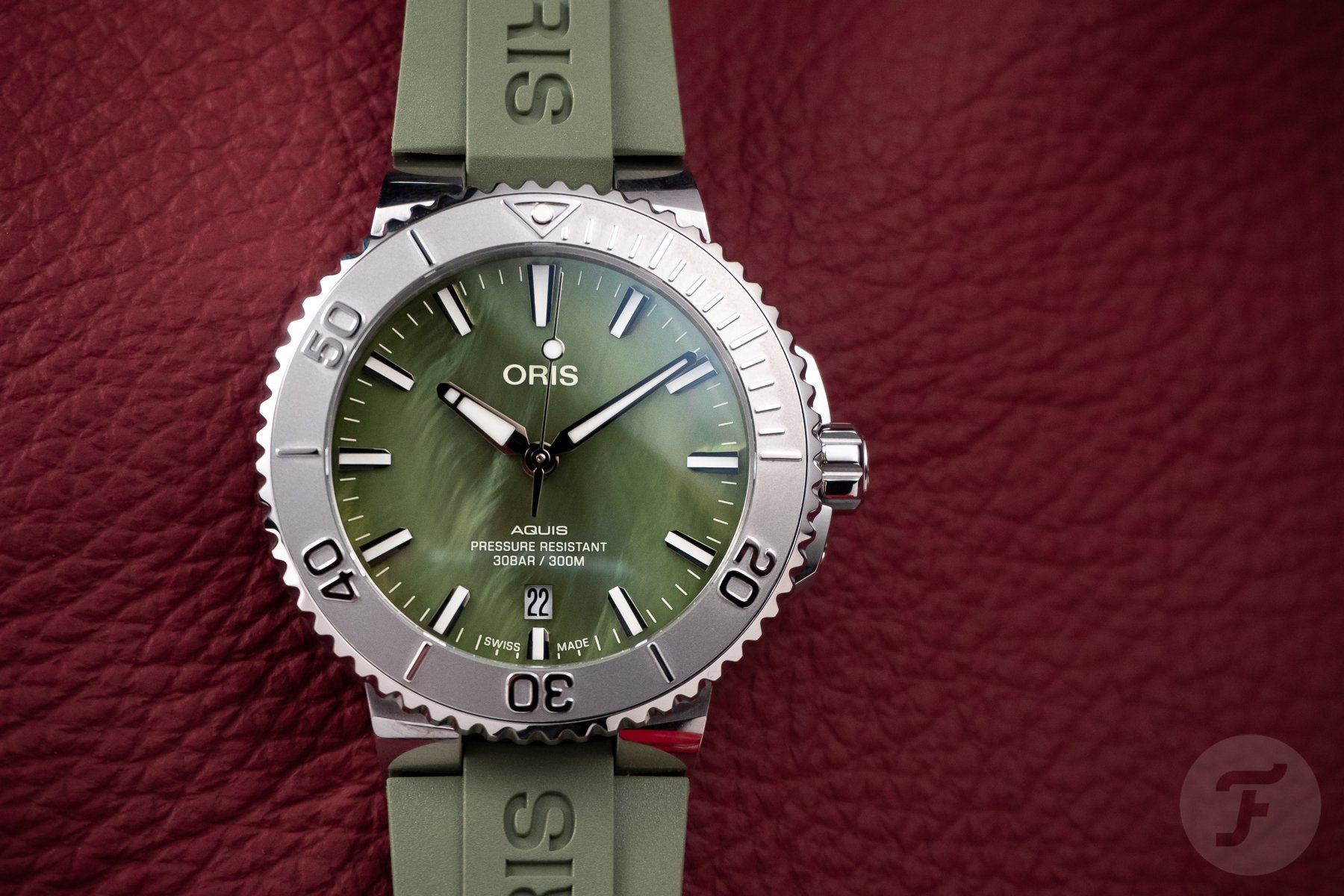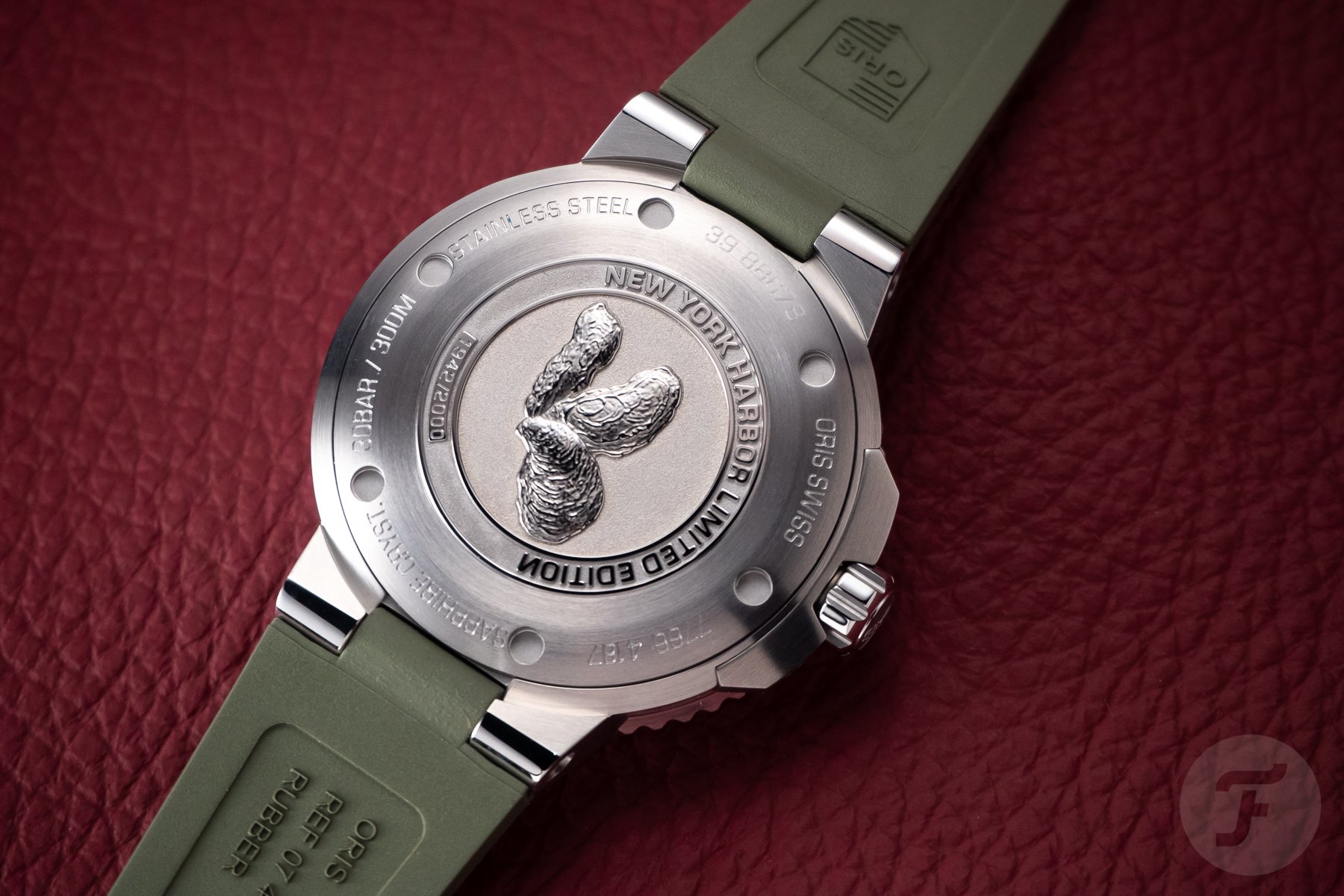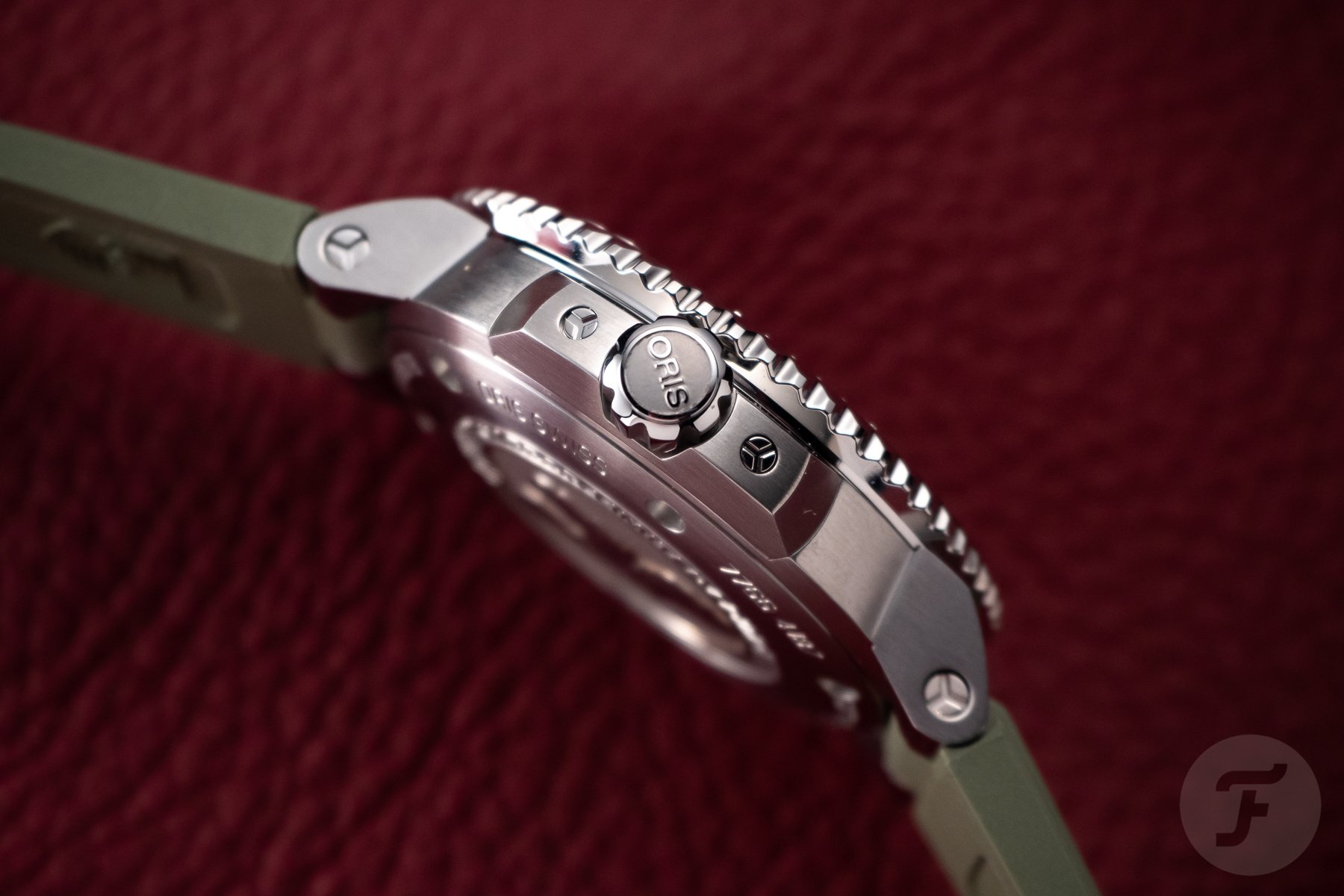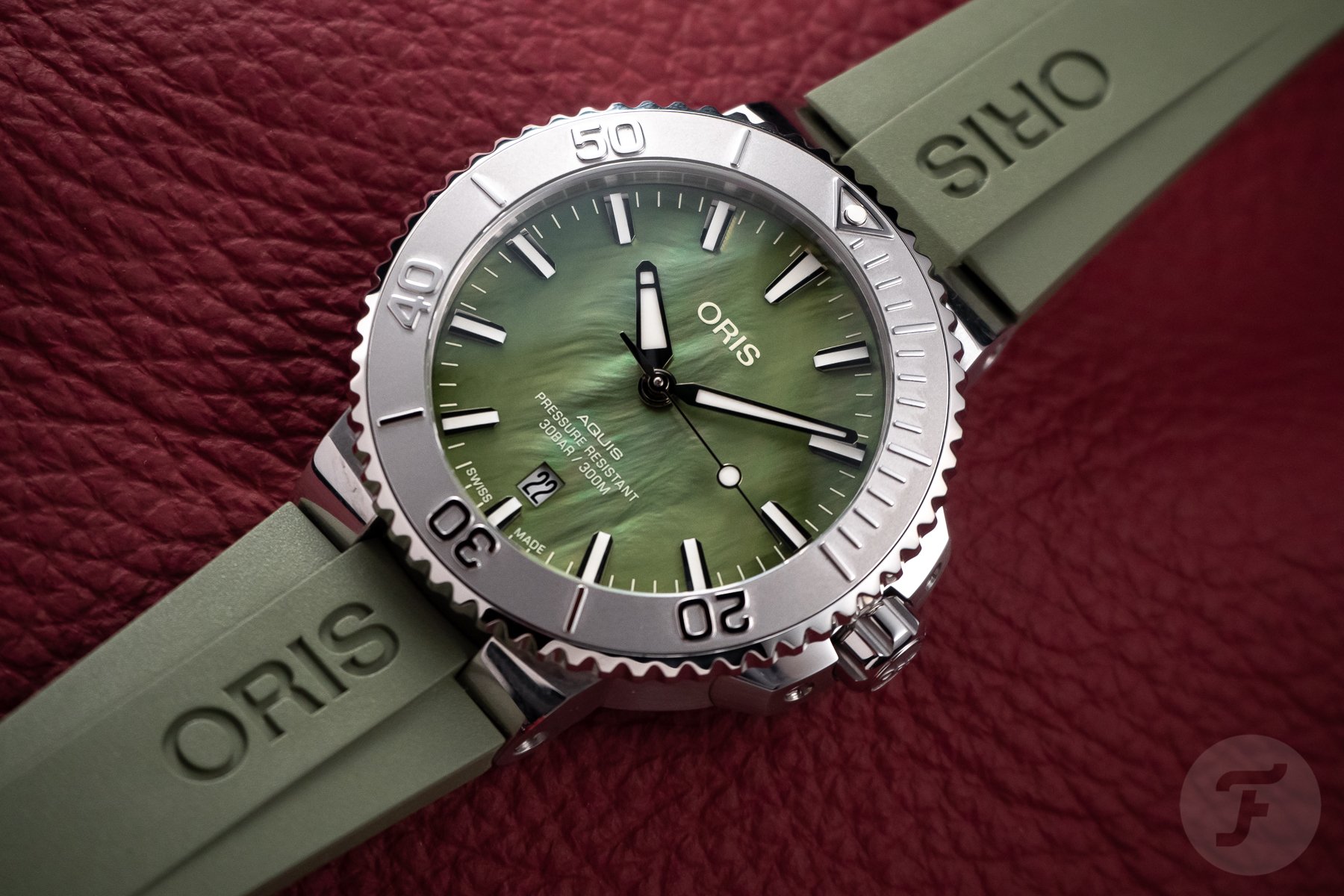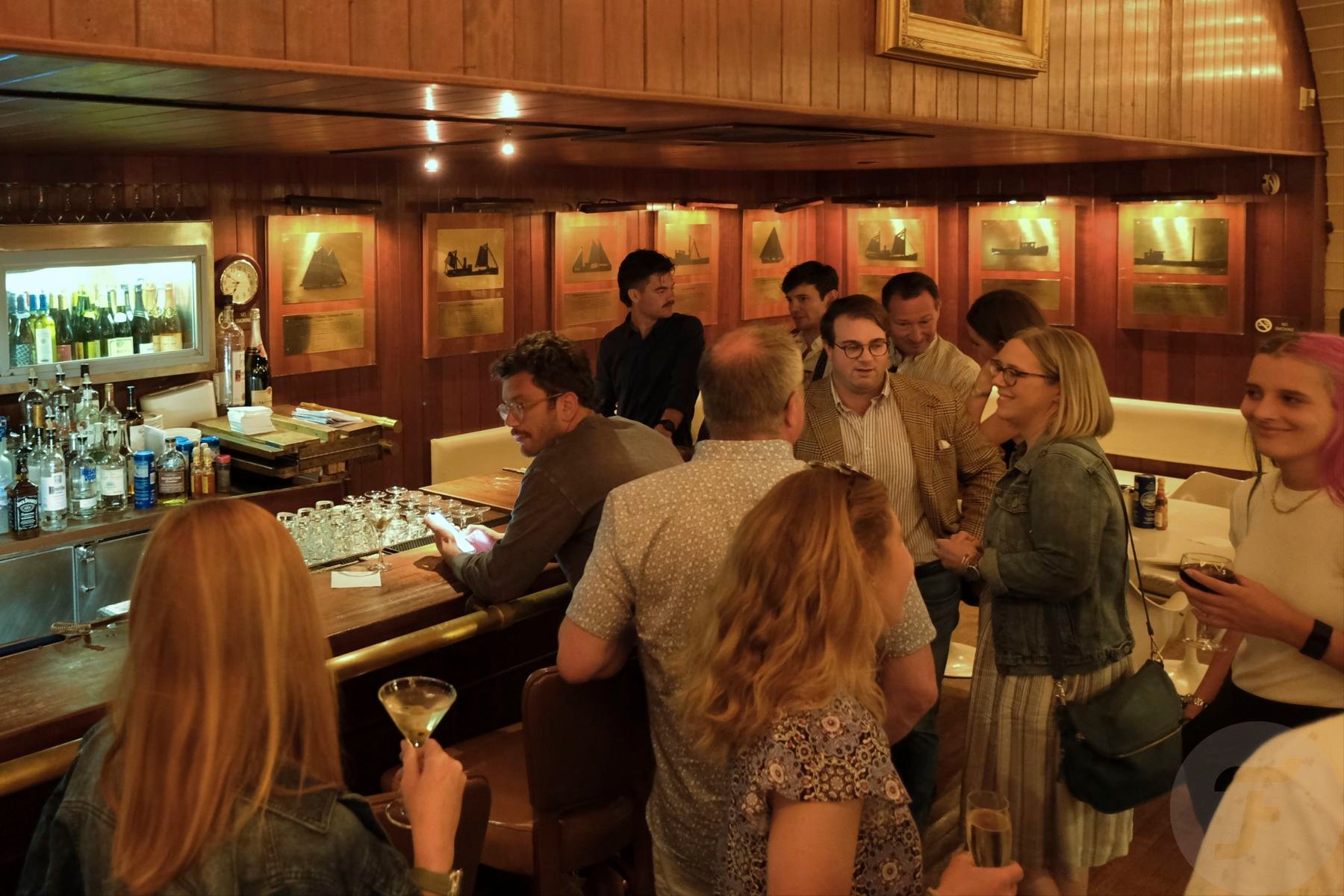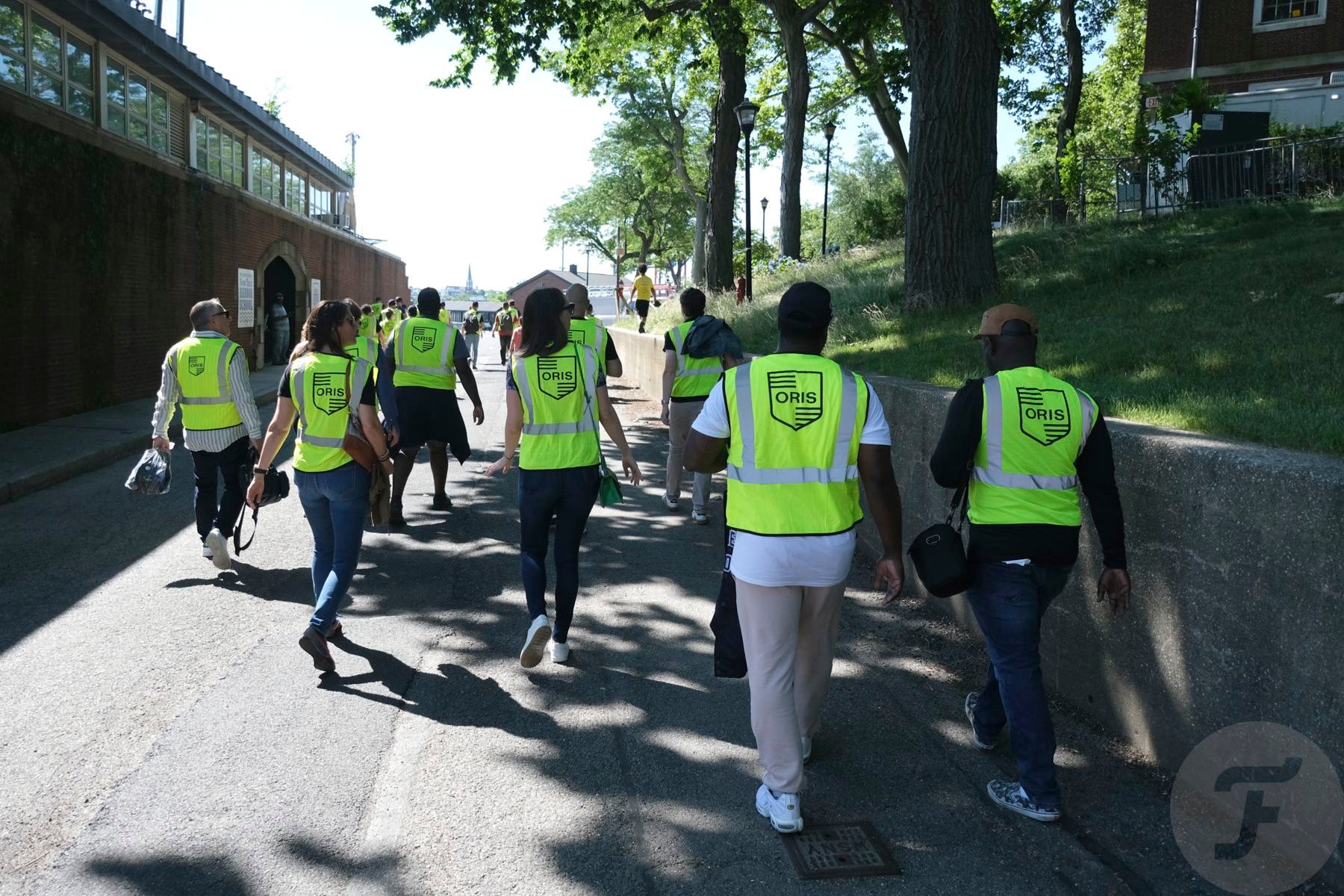Fratello’s Thomas Stover Takes A Trip To New York With Oris And The Billion Oyster Project
As I write this, I’m on a flight from New York back to my home base in California. I’ve just put down the book The Big Oyster by Mark Kurlanski, of which I’ve only read a few chapters so far. The book was one of a few gifts provided to those who attended Oris’s release of the New York Harbor Limited Edition Aquis. But truly, the trip itself was the best gift. Getting to learn more about Oris and its partner for this release, Billion Oyster Project, was a reaffirming experience. I’m beginning to understand more of how the luxury industry can serve and support environmental efforts in a way that is genuine and productive. I also made some friends within the watch and environmental realms alike. And, most importantly, I had a lot of fun.
For me, the trip started with a flight that arrived on Monday morning, June 27th. It was my first time in New York since I was a young child, so it was practically a new experience. The weather was wonderful if you like rain (which I do), and it ended up lightly raining off and on the whole day. I took an overnight flight from California. Arriving at the hotel at 11:00 AM, I only had a couple of hours to rest and refresh before we were off to our first event — a very special Yankees game.
It takes a village
The elevator opened to the small hotel lobby, our meeting place before embarking. I was met with a crowd of people talking, laughing, and acquainting or re-acquainting themselves with one another. I had not expected so many people for this event, and there ended up being even more once we connected with the local attendees. As I came to learn, I was not seeing and meeting just a massive group of writers and editors of watch blogs as I initially thought (though there were plenty of us present). In fact, the attendees were a kaleidoscopic mix of industry content producers, environmental activists, and, of course, Oris people.
I soon found Josh Shanks, my contact at Oris and the brand’s North American marketing and communications director. He was welcoming and warm as always. Then we loaded into the bus, and off we went to Yankee Stadium.
How I wore the wrong hat
We arrived early at Yankee Stadium and had it practically to ourselves as we were given a tour of the facility and the attached Yankees museum. I have to admit, I’m not a sports fan. The experience, however, wasn’t wasted on me. Our guide did as good a job as possible to instill the baseball spirit in me. The team’s history is rich and very productive, with the Yankees having outperformed every other team by the numbers. My favorite part of the tour was in the museum at a display that showed replicas of every World Series championship ring that the Yankees have earned. The very first “ring”, from 1926, was no ring at all, as the players opted for gold pocket watches instead. Of course, that was my favorite part.
The stadium itself is very impressive. The tour took us through public and not-so-public areas. We had a moment to hang out near the field and watch the teams warming up. Ashley Davis from Billion Oyster Project scored a ball tossed up by one of the players. The Yankees were playing the Oakland Athletics, a detail I hadn’t known beforehand. Most of my non-watch work occurs in the Oakland area. I own and wear many A’s hats, more for practicality and the city than the sport. Nonetheless, there I was, wearing the very nice but very wrong Oris × New York Yankees cap that we all had been provided. You don’t need to tell me how ashamed I should’ve felt. I felt it.
The best seats and an even better bartender
The nicest part of Yankee Stadium was from where we got to watch the game. As sponsors to the New York Yankees (and a couple of other teams as well), Oris gets access to owner boxes on special occasions. We piled into a double suite complete with kitchens, bathrooms, couches, a buffet, and a fully stocked bar. We also were fortunate enough to have the Oris bear, done up in Yankees jersey, and Ronnie, the best bartender you could ask for.
Ronnie is the Elton John of bartending. He’s energetic, charming, and entertaining. Having tended for the richest Yankees fans over the years, he has quite a few scandalous stories (and quite a few more that he couldn’t disclose). Ronnie took care of us, turning our Yankee Stadium experience into quite the Oris party.
I was dismayed to see so much single-use plastic used for our catering. The cup I grabbed for water ended up being my “everything cup” for the evening. I overheard Rolf Studer, co-CEO of Oris, ask Ronnie if there were any glasses for his beer. Unfortunately, being a stadium (even in the box), they can’t allow any glass. It was from Ronnie that I learned that Yankee Stadium has a “billion-dollar machine from Italy in the basement” that perfectly separates and processes all of the recyclables. There may have been some hyperbole, but that comes with being a good storyteller. I hope he’s right.*
A billion oysters throw the first pitch
Most important, I think, to both Oris and the Billion Oyster Project was the latter’s executive director and co-founder Pete Malinowski throwing the first pitch. I’ll get into what the Billion Oyster Project does, but the “why” is summarized fairly succinctly in the New York Harbor Limited Edition release article.
Malinowski was (purportedly) nervous about throwing the first pitch. It was a big moment for him, but more importantly for Billion Oyster Project. As an organization, it has steadily been gaining more momentum and attention. Being the featured opener for a Yankees game was a big step and an opportunity that Oris was happy to have a hand in setting up. Pete went down to the field a few minutes before the throw. A short video about Billion Oyster Project played on the jumbotron. Then Malinowski wound back and let it go. It was a perfect pitch. I figured it would be. He looks almost like he plays baseball professionally already.
- Recognize that watch on the wall?
- The boys from Wrist Check Podcast with the real deal
Game-time shenanigans and an early(ish) night
The game was good, and most of our crew made a solid effort to watch it for at least the first half. But unlimited food, an open bar, Ronnie, and a whole lot of interest in watches can be distracting. Then they brought Babe Ruth’s bat up to our room.
Josh Goldblatt and Haley Yeranossian of Yankee Stadium arrived with one of Babe Ruth’s bats from the 1920s for us to handle and take pictures with (carefully and fully gloved). Present, too, was a gameplay jersey, still with dirt on it from a dramatic slide into base, and two different genuine World Series championship rings. We had a lot of fun with all of that.
I did my best to hold out until the end, but a lack of sleep caught up with me, and I eventually had to call it quits and take an Uber back to the hotel. We had an early start the next morning on Governors Island.
A day on Governors Island
The day after the game, Tuesday, was the main event. Of course, the Oris New York Harbor Limited Edition dropped that afternoon and was officially revealed to us. But perhaps just as importantly, we were given a hands-on tour of Billion Oyster Project’s facility and process. I made sure to not wear my betraying New York Yankees cap that day and got sunburned for it.
We walked from the hotel that morning to the ferry terminal. I (foolishly) thought I might be able to get a nap in on the ferry ride over. The ferry ride, however, took all of five minutes. Governors Island is very close to Manhattan, apparently. From the ferry, we walked a short way to an open plot of land. This section of Billion Oyster Project’s operations doesn’t look like much, but it does a lot of work. There was a shed, a few bits of equipment, some oyster reef structures ready to be sent on to the next step, and piles and piles of shells.
Billion Oyster Project
Billion Oyster Project is a relatively straightforward endeavor. Its goal is to establish one billion oysters in New York Harbor by 2035. This is important for many reasons, but notably because of the incredible water-filtration capabilities that living oysters possess and the habitat that established oyster beds provide for other integral marine life. The organization is going to achieve this goal, in part, by recycling restaurant oyster shells into new oyster beds.
Billion Oyster Project currently collects oyster shells from 55 restaurants in the New York area. Each week, a truck with a massive open-topped container takes the ferry over and deposits 6,000 pounds of fresh shells. That’s what we were seeing at this yard. The shells have to cure for a year, during which natural processes wash and age the shells to a state that’s more conducive to providing a habitat for new oysters. As we moved through the piles, it became apparent that there was an aging process going on. Aged oyster shells don’t smell like much. Fresh ones stink. I should know. I dug through them.
When observers become participants
Billion Oyster Project depends upon rotating crews of volunteers and students to achieve its goals. It’s an important aspect of the organization’s process. First, volunteers provide the labor necessary to get the work done. But more importantly, volunteers are educated on why the Billion Oyster Project is important. Those volunteers, in turn, become ambassadors for their own communities as they spread the word. As a sizeable group ourselves, we made perfect candidates to volunteer our own time and energy to the cause. On paper, at least.
We were first tasked with cleaning up the shell mounds. Armed with gloves, trash grabbers, and bins, we set out to find every bit of non-organic debris we could find. Having worked in the food industry before, I was surprised to see how clean the shell mounds were already. A kitchen is a fast-paced environment, and separating shells from other general diner debris takes effort and attention. That said, there was still plenty of trash for us to find.
As we dug, we found plenty of plastic bags and rubber bands. The prize finds were the occasional pieces of cutlery that would turn up. I found a single-serving bottle of Tabasco hot sauce, still unopened (I didn’t taste it). For all our efforts, our group only managed to partially fill our buckets after an hour or so. I don’t know how well other volunteer groups do, but I feel like our performance was probably fairly underwhelming to the Billion Oyster Project professionals. We then went on to processing.
Sift and rinse
A front-loader pours sufficiently aged shells into a hopper that sends them on a fast-paced multi-part assembly line. The first section is a conveyor belt that allows two cleaners to pick out any last pieces of trash. That’s what I did. It was a bit like that I Love Lucy episode at the chocolate factory, except I wasn’t popping them in my mouth. From there, the shells drop onto a vibrating screen that sifts out smaller pieces that won’t work for future habitats. Then the shells enter the wet tumbler, where running water and rotation wash the shells and sift out the last bits that are too small to be of use. What drops out of the far end into baskets are the shells that are ready to be loaded into various forms.
Bags and boxes
Billion Oyster Project uses different containment forms for the shells depending on what type of reef structure needs to be built or where it’s intended to go. The biggest forms look like big, rectangular, shell-filled LEGO bricks, heavy enough that only the front loader can move them. The smaller forms are, essentially, filled bags that are bundled and deployed as needed. We didn’t get to see the process of oyster spawning and seeding, as that happens somewhere else on the island. It’s a complicated and delicate-enough process that I’m certain they wouldn’t let volunteers try their hands at (at least not us).
- Inside the Oris Airstream
A very special lunch
After our hands-on lesson, we made our way over to the other side of the island for lunch at Collective Retreats. Essentially, it’s an open-air hotel and event space. The only structures are wood-framed canvas tents of various sizes peppered throughout the grasses. With a view of the Statue of Liberty and Manhattan, it was the perfect setting for the release of the New York Harbor Limited Edition. The food was excellent. After our meal, VJ Geronimo, CEO North America for Oris, Rolf Studer, and Pete Malinowski each stood up and said some important words.
The nuance of doing it right
Of course, the watch was technically the headline of the event, but the speeches didn’t shy away from the importance of Billion Oyster Project. Also, some important points were brought up about what roles a luxury brand like Oris could and should play in partnering with and promoting environmental organizations. I gained even greater clarity with my interview with Oris co-CEO Rolf Studer that afternoon and in other private conversations with him. Keep an eye out for that upcoming interview. Essentially, though, the amount of work a watch company or a specific watch can do regarding sustainability is negligible.
Watches account for a minuscule amount of the use of resources, such as metal, compared to other industries. In a short time, many to most companies will undoubtedly utilize renewable energy and other green alternatives to some extent in their operations. Those are natural steps into the future and don’t make a company — watch company or otherwise — environmental heroes (not that the people at Oris have labeled themselves as such).
If a watch is going to say something, better it’s something good than something trivial.
What’s important — to Oris, at least — is that brands leverage their positions, networks, and products to bring awareness to these organizations that need and deserve all the recognition and support they can get. A watch is a very public thing, and any particular watch can say a lot, both about itself and its wearer. Oris is counting on that two-way street. The brand is banking that these special watches appeal to customers who are also interested in the sort of activism that the watches represent. Wearing these watches will initiate conversations or adjust actions that step closer toward awareness and support of sustainability. If a watch is going to say something, better it’s something good than something trivial.
Oris putting its money where its mouth is
What Oris is doing is far from lip service too. We see it in the watches that the brand produces that directly benefit its partnering organizations. But as we hung out that afternoon, during dinner at Grand Central Station’s The Oyster Bar (one of the providers of shells for Billion Oyster Project), and on into the night, I began to learn that Oris is quite a generous company.
I ended up attaching myself more to the activist crowd than the watch crowd. It’s no surprise that they’d be just my kind of people. But of the people I made friends with and got to know better, I realized that most of them weren’t there necessarily for Oris or the watch. Nevertheless, Oris brought them out on the brand’s own dollar.
Not there for the watches
Present at our table at the bar that evening was an environmental content producer there on behalf of Billion Oyster Project, a couple from Louisiana that are rebuilding shorelines with recycled glass, as well as a representative of the Coral Restoration Foundation, an environmental nonprofit in the Florida Keys rebuilding coral reefs. The Coral Restoration Project has previously partnered with Oris to produce a few watches, including the Oris Staghorn Restoration Limited Edition and solid-gold Oris Carysfort Reef Limited Edition. The presence of these guests, however, did not directly benefit Oris, at least not in a transactional, extractive sense. Nevertheless, Oris thought that there was something worthwhile about their attendance. Oris bringing these non-watch people out for their own sake speaks more to me than the watch release, honestly.
…Oris cares about the people and communities and environments it involves itself with.
Beyond that, after meeting and getting to know the attending members of the Oris team — Rolf, VJ, Josh, Ana, Phil, and Mark — I began to realize that the friendliness I experienced when I first met Josh Shanks a couple of months ago is not so much his own personality trait (though he is actually that nice), but a trait of the entire organization. It’s apparent to me that Oris cares about the people and communities and environments it involves itself with. Oris also happens to make very good watches.
Heading home
Now I’m on my way back home, flying somewhere over Colorado. The flight to and from New York almost stopped me from attending this event. I’m very thankful now that it did not. But for someone that’s so conscious of trying to make sustainable choices, justifying a roundtrip cross-country flight to an environmental event was a hard sell to myself. It’s a sentiment that a few others volunteered, including Rolf Struder, unprovoked by my own concerns. But for me, the knowledge, network, and inspiration I’ve gained from attending justify the cost. And there must’ve been something equally valuable for the others as well.
I’ll be more mindful about my travel for the rest of the year and continue to do what I can. For what it’s worth, the flights and entire event were carbon neutral with plenty of recycling along the way. It’s a step in the right direction, and as long as we keep stepping that way, we’ll get there.
Find more information on Oris’s efforts toward helping the environment on the brand’s website.
You can also follow me on Instagram @watchingthomas
*Since this article published, I’ve learned that the New York Yankees and their stadium are some of the greenest institutions in North American sports. More information can be found here.


